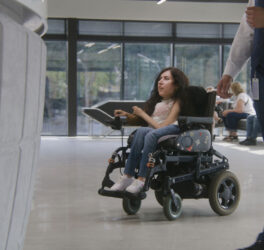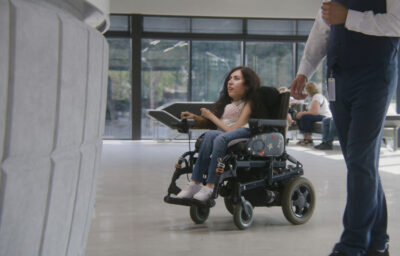According to research from charity Guide Dogs, thirty-two percent of people with vision disabilities, and forty-eight percent of wheelchair users were less willing to go out on their own because of pavement parking.
Pavements could be made safer for people with disabilities, and families, under new proposals to ban antisocial parking unveiled by the UK government on 31 August 2020.
Parking on pavements disproportionately affects people with visual or mobility disabilities, assisted by guide dogs, and wheelchair and mobility scooter users. More than 95% of wheelchair users and people with vision disabilities say they had problems with vehicles parked on pavements.
Three options are proposed in the consultation launched – improving the traffic regulation order process to make it easier for councils to prohibit pavement parking in their areas, giving councils powers to fine drivers who park on paths, and a London-style nationwide ban on pavement parking.
However, there is still a major role for cars and other private vehicles, so any future plans will need to take this into consideration.
“Parking on pavements means wheelchair users, visually impaired people and parents with pushchairs can be forced into the road, which is not only dangerous but discourages people from making journeys.” said Transport Secretary Grant Shapps
“A key part of our green, post-COVID recovery will be encouraging more people to choose active travel, such as walking, so it is vital that we make the nation’s pavements accessible for everyone.”
Pavement parking presents a clear safety risk when parked cars occupy the pavement and force vulnerable pedestrians to move into the road.
People with disabilities say pavement parking is a significant barrier to carrying out daily journeys. As many streets were built decades and centuries before the high levels of vehicles currently on roads, any measures will need to ensure the free flow of traffic and access for the emergency services.
The consultation is the government’s latest step to deliver on commitments to make transport equally accessible for all users by 2030, as set out in the Inclusive Transport Strategy.








